First, I love the
@Model Shipways kit of
Harriet Lane! I wish, however, that she was designed for a more experienced model maker and that she relied more heavily on the available plans. Webb designed the ship and the plans are open source. That aside, the problem is adding details like scuppers after all of the decking, finishing and painting. If any of you are planning to build her, I hope you'll read my log to help you plan ahead for the things I had to do after I thought I was done - the horror of adding height to the ships sides after I had coppered the hull and otherwise "finished" the hull with paint

. For details of the horror see posts 222-235. Well, the same thing happened when I added the scuppers.
I located the scuppers on the model mainly by eye. My printed copy of the Webb plan is not the same scale as the kit plans. It's pretty close, so I think I am also pretty close to where Webb showed the scupper placement. Because I was worried about ruining the finished work inboard, I decided to drill out the scuppers from inboard rather than risk damaging something it would be very hard for me to fix If I opened the scuppers from outboard. Best laid plans . . .
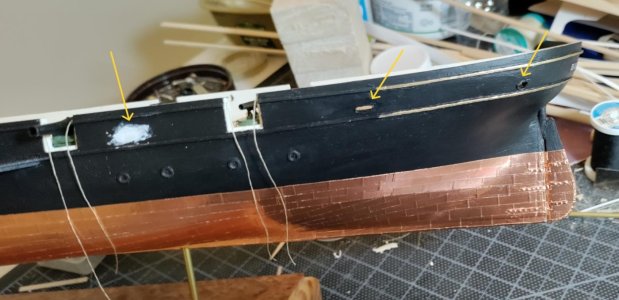
The yellow arrows point out the aft scuppers port side. I botched the first effort to open the scupper - first arrow on the left. What you see is my effort to repair the nasty hole I made. While I waited for that repair to dry, I worked on the other scuppers and you can see the finished result - second and third arrows. Because I am still using stone-age technology, the scuppers came out slightly wonky. I needed something to give them a finished look. I made a buck out of scrap wood that I sanded down until it fit snug in the scupper. Then I wrapped 28 gauge annealed wire around the buck to create a rim. I glued the rim to the outside of the scupper hole and was happy with the result.
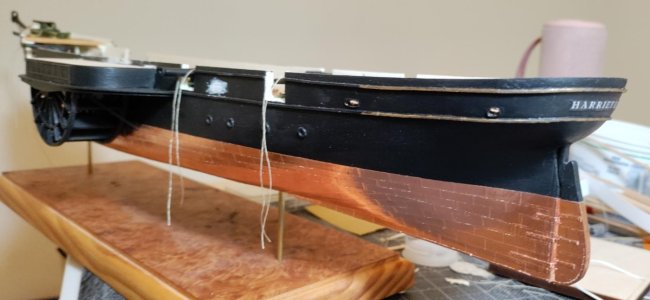
Here's what it looked like from inboard when I first opened the scuppers.

Here's the finished product of this part of the project including the one scupper forward of the paddlewheels shown on Webb's plan.
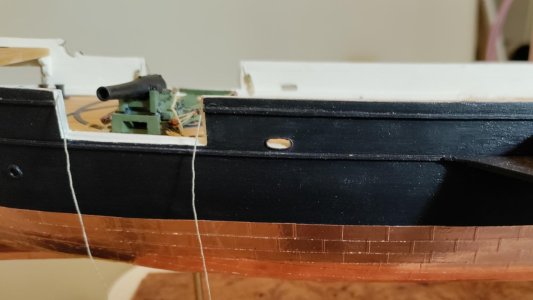
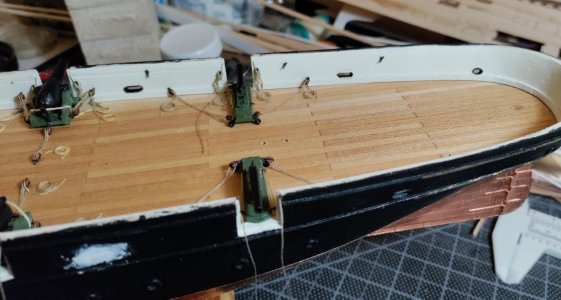
Yes, I also applied a rim inboard to give a finished look. The last pic shows the scupper where I had botched the job first go.
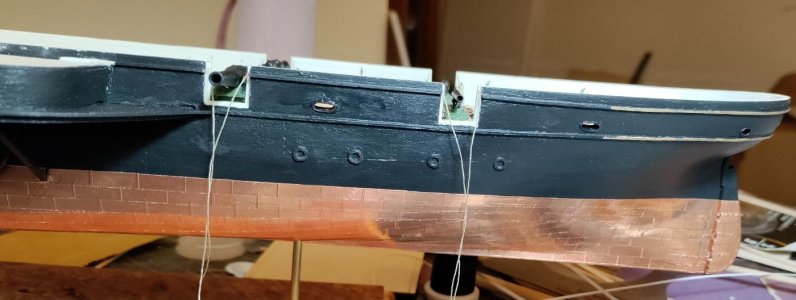
I think the addition of the scuppers was worth the effort. It brings an additional level of what I'll call reality to the model. If you're going to build
Harriet Lane, I highly recommend adding the detail of the scuppers. But, for goodness sake do it while the hull is still bare wood

That's all for tonight.
Blessings.
Chuck

I want to kick myself every time I go in there.
Well, almost every time.





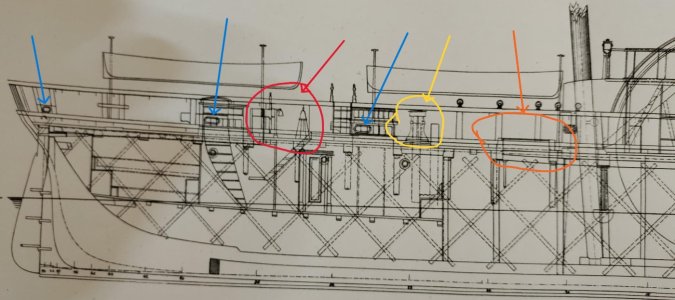









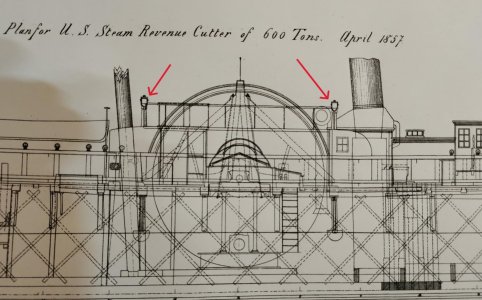

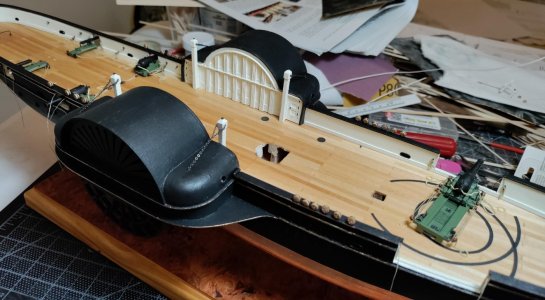
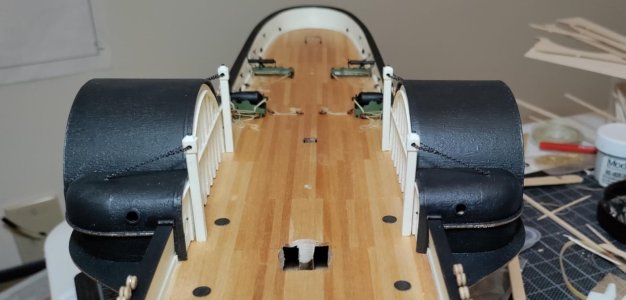
 and AMEN to the above. In retrospect I'm glad I didn't have the Webb plans when I built my 3/32" scale version. I'd still be working on it!
and AMEN to the above. In retrospect I'm glad I didn't have the Webb plans when I built my 3/32" scale version. I'd still be working on it!